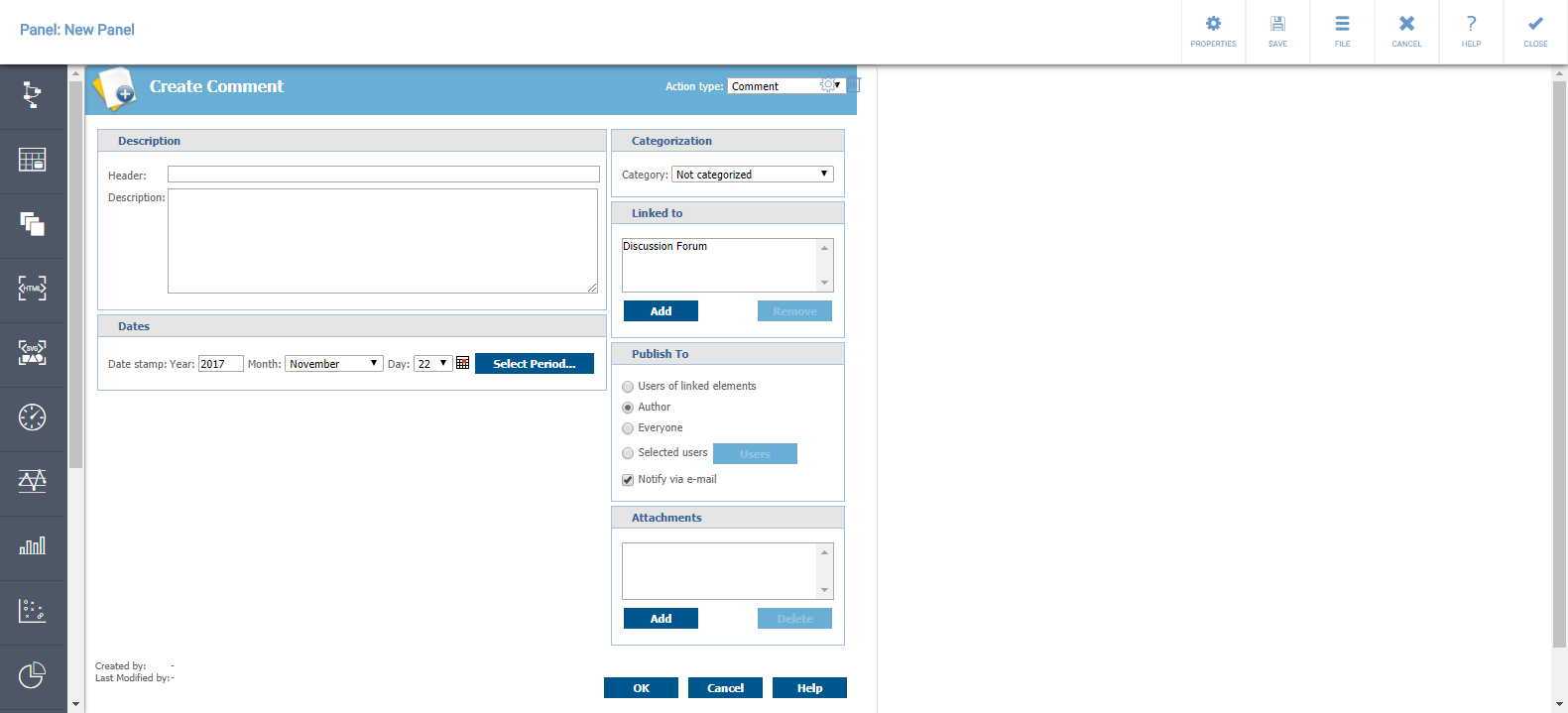Difference between revisions of "External Content Properties"
Jump to navigation
Jump to search
m |
(306991) |
||
| Line 1: | Line 1: | ||
| − | With the External Content presentation object you can show content from some other website or web portal. External | + | With the External Content presentation object you can show content from some other website or web portal. The External Content presentation object uses html's iframe element to embed websites. It enables integrating multiple Web applications into a single UI. |
| + | |||
| + | == Context Variables in External Content == | ||
| + | The session [[Context#Effective_Context_and_Context_Inheritance|context variables]] and their values are available in the external content pages via the getSessionVariable() javascript function. In addition, the session context variables can be set in the external content pages via the setSessionVariable() javascript function. Check the examples in the http://<Your_Host_Name>:8080/mobiledash/examples/test.html file for using the functions. | ||
{{MDBTutorialExternalContent}} | {{MDBTutorialExternalContent}} | ||
[[Category: QPR MobileDashboard]] | [[Category: QPR MobileDashboard]] | ||
Revision as of 11:02, 4 April 2017
With the External Content presentation object you can show content from some other website or web portal. The External Content presentation object uses html's iframe element to embed websites. It enables integrating multiple Web applications into a single UI.
Context Variables in External Content
The session context variables and their values are available in the external content pages via the getSessionVariable() javascript function. In addition, the session context variables can be set in the external content pages via the setSessionVariable() javascript function. Check the examples in the http://<Your_Host_Name>:8080/mobiledash/examples/test.html file for using the functions.
Usage Example
- Click the External Content presentation object icon.
- Click the Properties button on the presentation object to open its properties.

- Define the Name, Description, and the External content URL. In the Name and URL fields, you can use context variables by typing in the context variable name in the format "{#contextvariablename}".
- After defining these properties, click Close. The web page should now be visible:
